This topic describes how to use the flow editor in Chat Flow. It covers how to create a flow, orchestrate the components on the canvas, and publish the flow.
Overview
Using the flow editor involves five main steps:
Create a flow: Create a flow or upload a JSON file exported from another flow in the editor.
Orchestrate the components: Drag the required components to the canvas and configure them as needed.
Publish the flow: After you finish the orchestration, publish the flow.
Edit the flow (Optional): After you save or publish a flow, you can modify it as needed.
Delete the flow (Optional): Delete the flow if it is no longer needed.
Before you begin
The flow editor components involve WhatsApp, Viber, Messenger, and Instagram message services. Before you use the flow editor, the following requirements must be met:
Alibaba Cloud account registration and enterprise identity verification have been completed.
Chat App Message Service has been activated.
To use WhatsApp:
You have created a WhatsApp channel.
You have registered and bound a WABA account, and the WABA has been approved by WhatsApp. For more information, see Register a WABA and manage phone numbers.
To use Viber:
You have created a Viber channel.
You have submitted a service account application and it has been approved. For more information, see Manage Viber service accounts.
To use Messenger:
You have created a Messenger channel.
You have connected your Facebook page. For more information, see Connect to a Facebook Page.
To use Instagram:
You have created an Instagram channel.
You have connected a professional account. For more information, see Connect to an Instagram professional account.
Procedure
1. Create a flow
You can create a flow by using different methods:
Entry point: In the Chat App Message Service console, choose Chat Flow in the left navigation pane. On the Flow Management tab, click Create Flow.
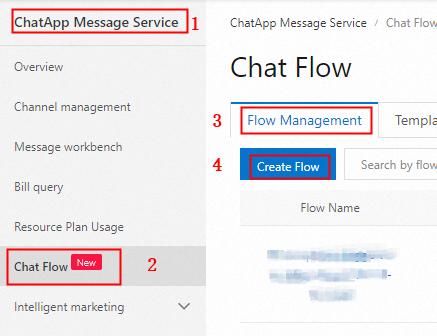
Choose a creation method: Select a creation method. You can Create on Blank Canvas, Import Flow, or Create Based on Template.
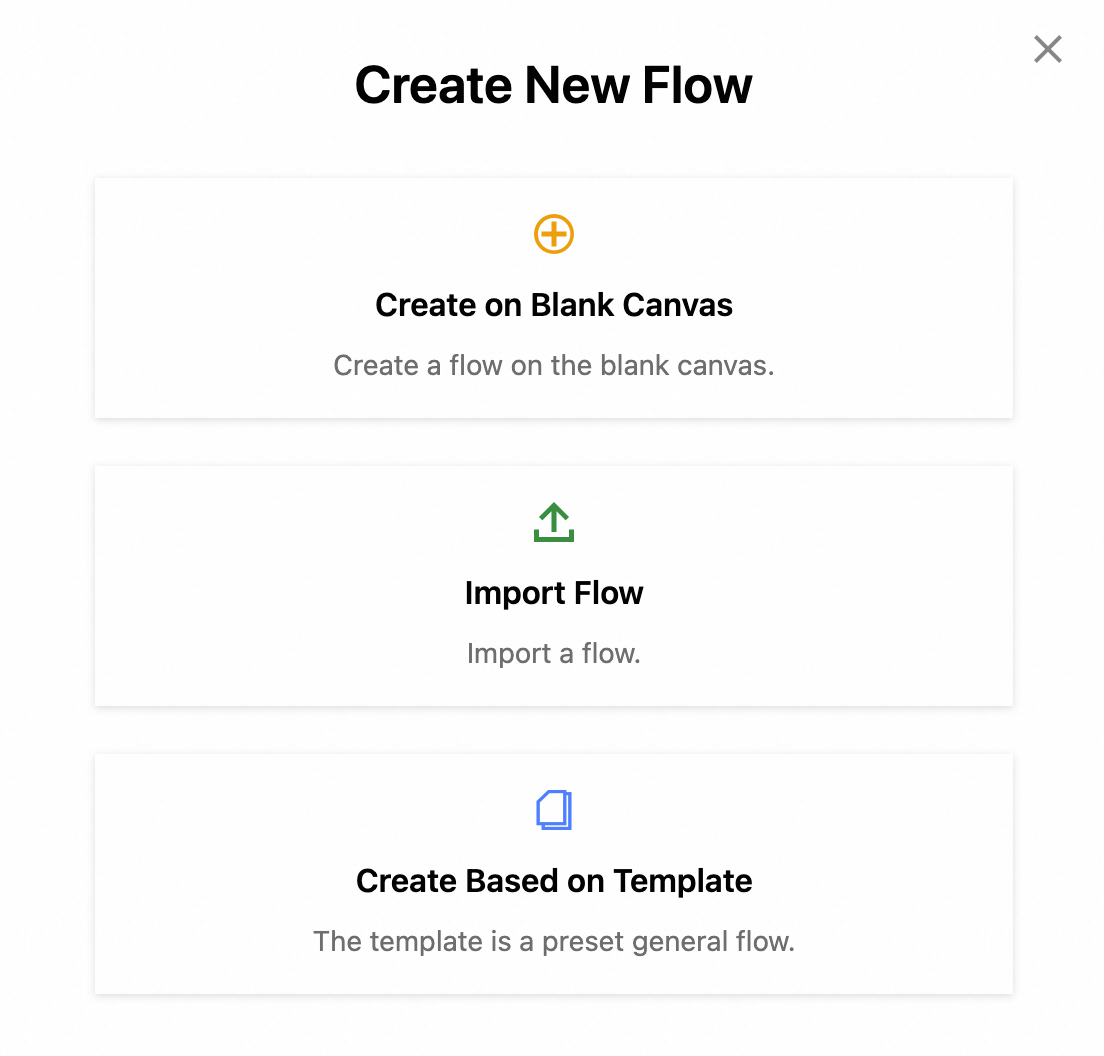
Create on Blank Canvas
Create a flow from scratch on a blank canvas.
Trigger type
Description
Manual
Triggered by API operations or marketing campaigns.
WhatsApp
Triggered by a WhatsApp message.
Instagram
Triggered by an Instagram message.
Viber
Triggered by a Viber message.
Messenger
Triggered by a Messenger message.
Import Flow
Upload a JSON file that was exported from another flow. After the file is imported, a new flow that is identical to the original is created.
Create Based on Template
In the dialog box, select a template from the View Template drop-down list and click OK.
NoteAlternatively, on the Chat Flow page, click the View Template tab. You can select a template, edit its components as needed, and then click Create Flow to create the flow.
Set flow information: Enter a flow name and description, then click OK.
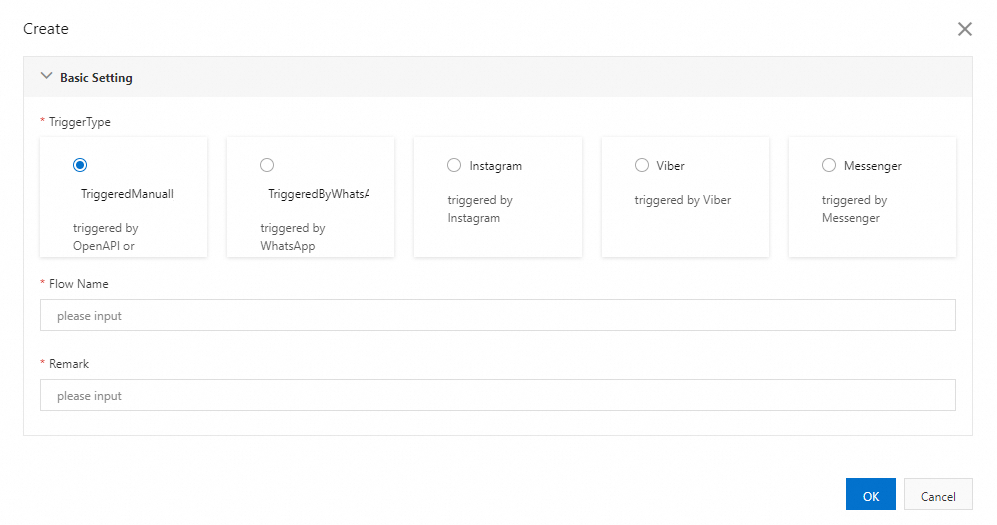 Note
NoteYou must set flow information when you create a flow from a blank canvas or import a flow.
2. Orchestrate the components
Design and orchestrate the flow on the canvas.
Go to the canvas page: In the Chat App Message Service console, choose Chat Flow in the left navigation pane. On the Flow Management tab, click a flow name.
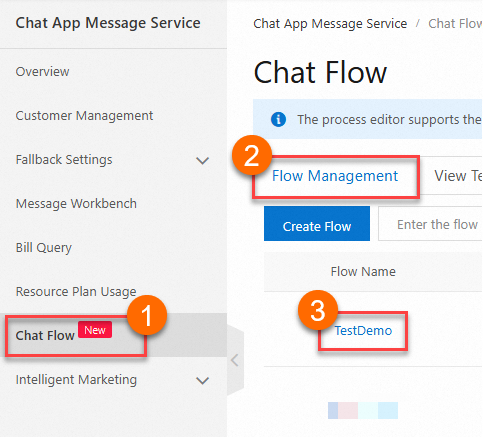
Orchestrate the components: On the canvas page, click the Component Library icon. Drag and drop the desired components to the canvas. Place components between the Start and End nodes, or click the
 icon between the Start and End nodes.
icon between the Start and End nodes.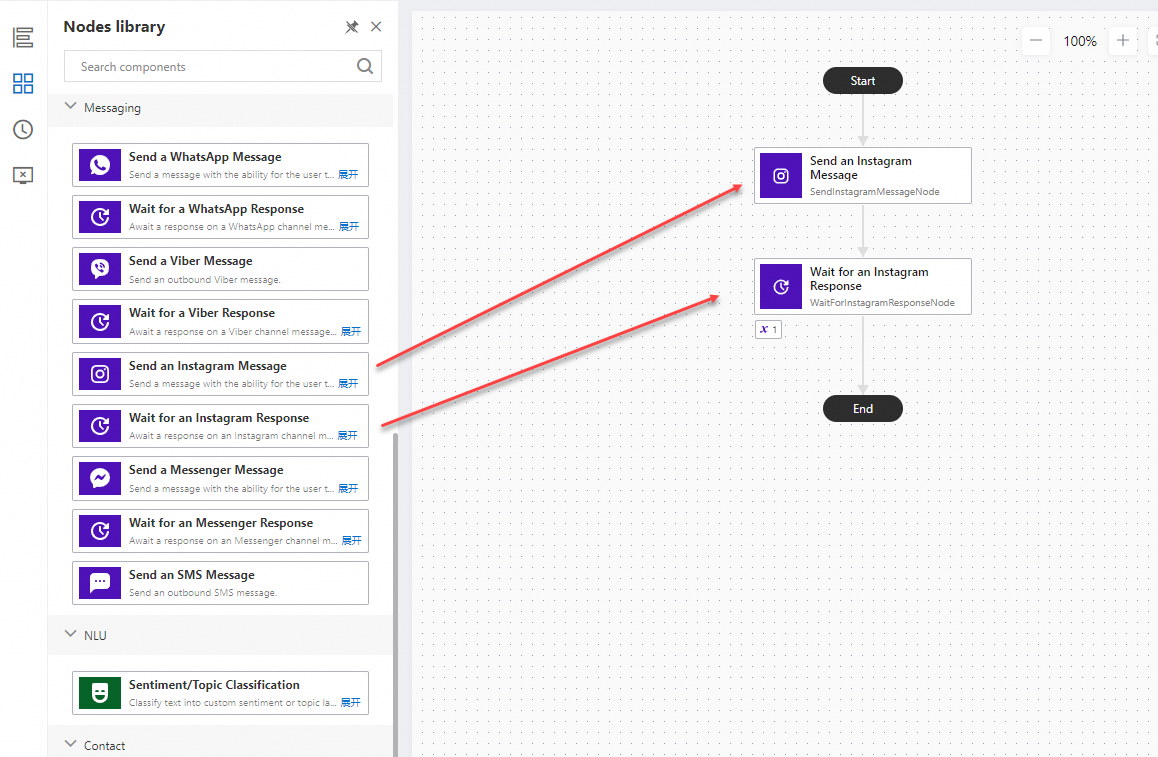
Configure components: Configure parameters for the components. For more information, see Chat Flow components.
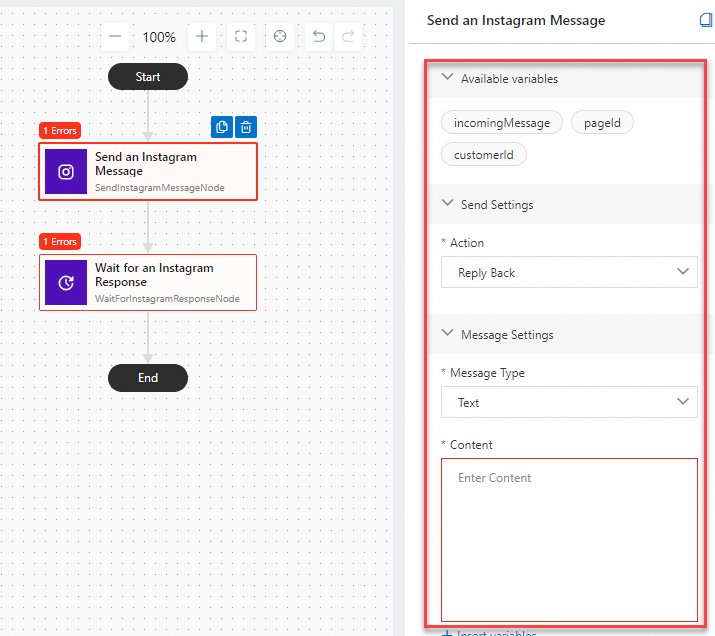
Save: After the flow is orchestrated, click Save in the upper-right corner.
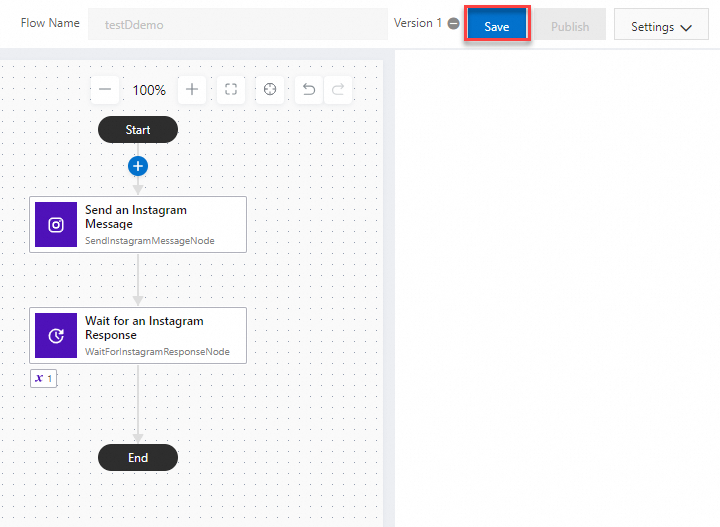 Note
NoteTo prevent accidental data loss, save your flow periodically during the orchestration process.
3. Publish the flow
Publish the flow that you orchestrated on the canvas. For flows that are triggered by user reply messages, the flow can be triggered only when it is published and associated with a marketing campaign. For more information, see Manage marketing campaign.
Go to the canvas page: In the Chat App Message Service console, choose Chat Flow in the left navigation pane. On the Flow Management tab, click a flow name.

Publish the flow: Click Save and Publish to publish the flow.
Check the flow status: On the tab, verify that the flow status is Published.
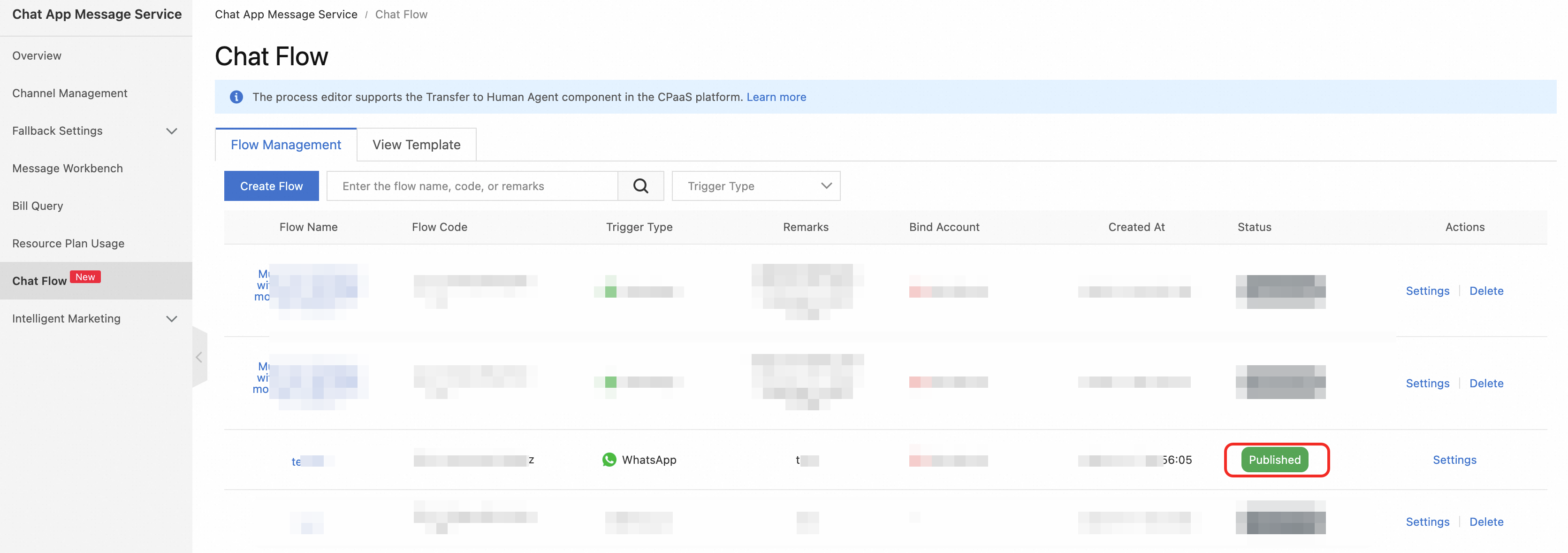
4. Edit the flow (Optional)
You can modify the basic information, account information, and logging configurations of the flow after it is published or saved.
Entry point: In the Chat App Message Service console, choose Chat Flow in the left navigation pane. On the Flow Management tab, find the flow that you want to modify and click Settings in the Actions column.
Edit basic information: In the Edit Flow dialog box, modify the Basic Information for the flow, including the Flow Name and Remarks.
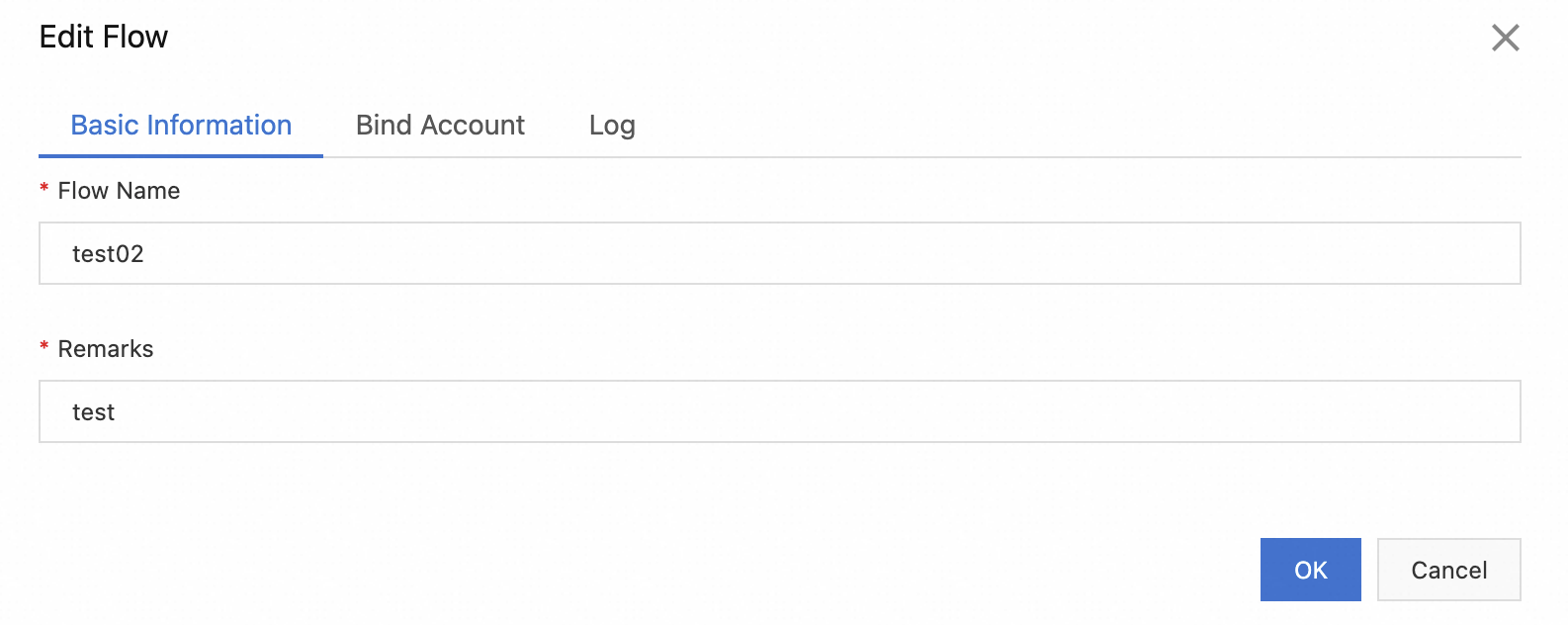
Edit account attachment: Click the Bind Account tab in the dialog box. Modify the Account Name and Mobile Number information.
NoteYou can attach an account only when the trigger type is WhatsApp, Viber, or Instagram. You can attach an account only when the flow is offline.
Log: On the Log tab, enable or disable the logging feature. When enabled, data from Chat Flow triggers and executions is collected by Alibaba Cloud Simple Log Service. You can then view the logs to assist with code debugging, fault analysis, and data analytics. To use the logging feature, you must activate SLS. For more information, see Use LoongCollector to collect and analyze ECS text logs.
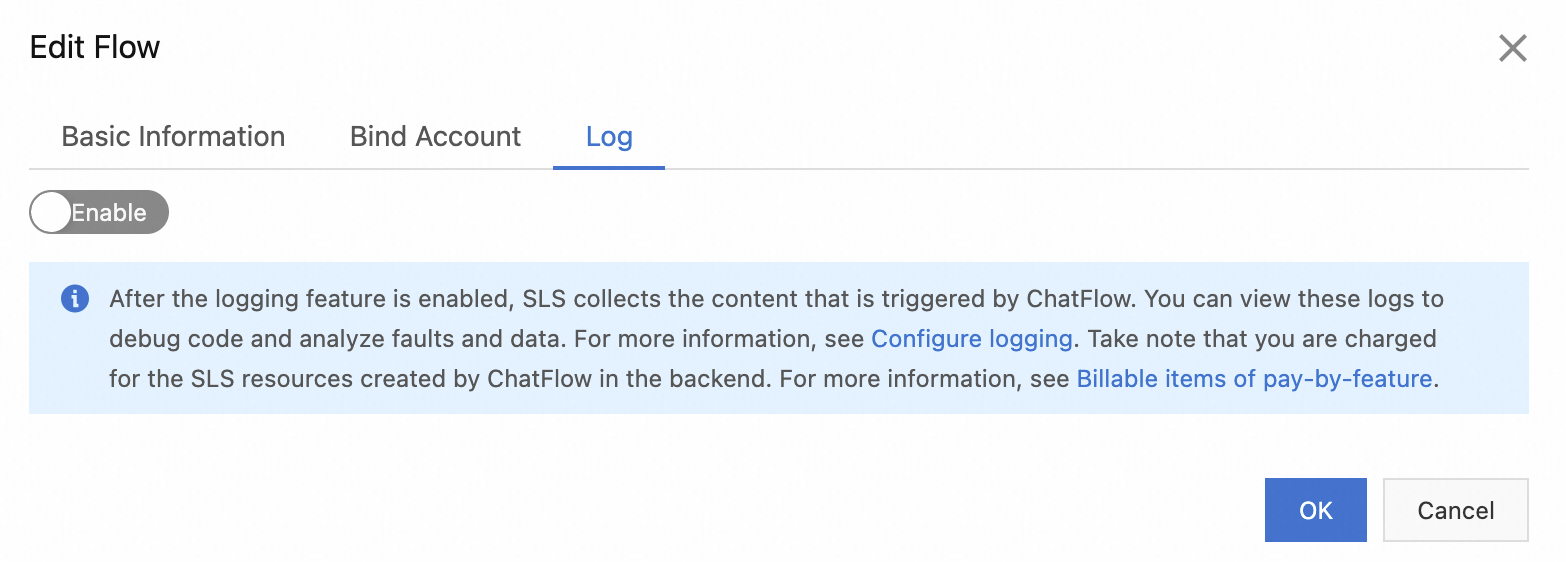
Click OK in the Edit Flow dialog box to save your changes.
5. Delete the flow (Optional)
You can delete a flow if it is no longer needed. Only an offline flow can be deleted. In the Chat App Message Service console, choose Chat Flow in the left navigation pane. On the Flow Management tab, find the flow that you want to delete and click Delete in the Actions column. In the message that appears, click OK.
The delete operation cannot be undone. After a flow is deleted, it cannot be used. Proceed with caution.

References
See the following topics for more information about the features of the flow editor and the details of component configurations.
To learn about the features of each area on the canvas, see Chat Flow canvas.
To learn about the configuration of each component, see Chat Flow components.